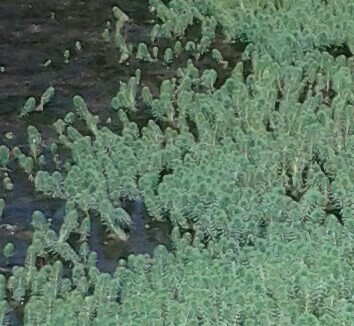Parrot Feather Watermilfoil (Myriophyllum aquaticum) on Jun 20, 2013
Originally reported as Hydrilla (Hydrilla verticilata)
Submitter has sample
Description of specimen
Long tubes with greens tufts and reddish orange roots. Increasingly taking over the borders of the pond.


Reporter
June 20, 2013, 2:46 p.m.
Lisa DeBruyckere
Aug. 3, 2013, 1:40 a.m.
Not knowing how large the infestation is, it's difficult to say what an appropriate control method would be. In general, if it is an small single patch growing in moderate water depths (i.e. not rambling along the shoreline with lots of rhizomes), a good swimmer could remove it from the roots, taking care to remove all the fragments from the water.
But as noted in the hotline report, it is growing at the borders of the pond, so that may well mean that manual removal is not really a feasible option any longer. Unfortunately, draining the pond during the winter will not do much, if anything to control this plant. Draining it during the summer could reduce the growth, but the water would have to be taken down far enough to let the infested area totally dry out for 6-8 weeks at a minimum. Even then it's not likely to kill off all of the plants - hydric soils are very hard to dry completely and the rhizomes on this plant are tenacious.
Chemical treatments using approved aquatic formulations of systemic herbicides like glyphosate or 2,4-D are possible, but difficult due to the thick waxy cuticle that parrot feather leaves have; careful applications conducted 2-3 times a year for a number of years are usually needed. Of course, herbicide applications are best done by licensed professionals and must always follow the label instructions.
Lisa DeBruyckere
Aug. 5, 2013, 11:14 a.m.